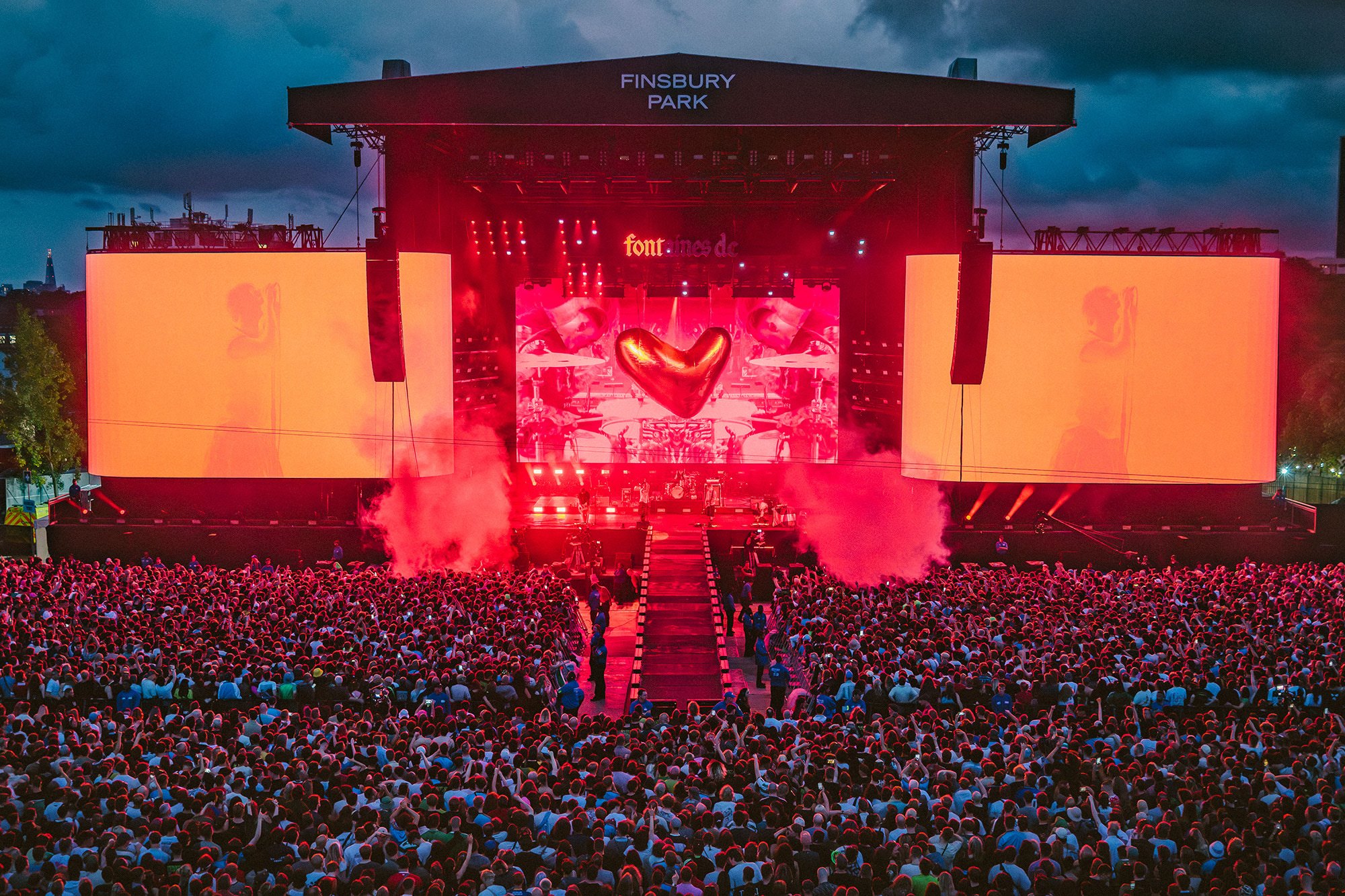How involved were the band themselves in the process? What kind of input did they have?
RC: Carlos and Deego are really, really involved. They obviously have a real solid vision of what they would like to see, and what they think their music should look like visually. They’ve been very hands-on with the process, actually providing feedback and notes to each revision. It’s been a perfect balance of creative freedom and direction from those guys, so it’s been a real pleasure getting an understanding of not just how they create this musical landscape, but also how they have a vision of how they think that should look – which is not always the case with musicians. A lot of the time, music is their art and that’s what they’re able to offer, but with these guys, they definitely had a vision for how the show should look too.
What do you think Fontaines D.C. fans expect from the visuals at their shows? Do you think that these visuals match their expectations or subvert them in any way?
RC: First and foremost, the fans want to see the band. That’s why the video and camera thing became the leading element. They’re going into outdoor arenas for 30,000 people. They need to be seen a long, long way back. Beyond that, there’s a lot of distorted shapes and objects, like the Romance heart and the double-headed pig. There’s a lot of iconography that surrounds the band and their visual identity. I’ve had a copy of the Romance LP up front and centre in my record collection for a while. I love that artwork, and I know a lot of fans probably do, so we all collectively felt that’s something we should lean into. It was great to have the opportunity to do that on such a large scale. We could use the video as a giant light source, working with the set piece of the heart and the negative space within that.
NJ: This is the first time there’s been that many fans seeing them on this scale, so they wouldn’t really know what to expect. We wanted them to still feel a part of the show, because their audience has always seen them in a more intimate venue. When you see a band in an intimate venue, you feel a part of the band’s story and journey, and sometimes that can be lost on the next level up. We wanted to retain that connection between fan and audience.
KO: It’s not just the scale. It’s also the first time introducing video, so it had to still feel like the band. It just had to be their vibe. We had a conversation with them about needing to create not just the vibe on stage, but the vibe that was there all the time. They wanted the audience to see them. They wanted something that felt clean and beautiful, but still resembled them, and would allow the show to read. Then, obviously, you have to incorporate these beautiful colours, and this whole ethos of the band, to punch through and come across as an extension of who they are.
RC: We all wanted to go bold and daring with the video looks. We wanted to go against the grain. It’s punk, you know? I mean, it’s what punk music stands for. We wanted to do that visually as well, so we didn’t want to be afraid of really cranking those acidic colours and those pop art, Andy Warhol-esque looks.
